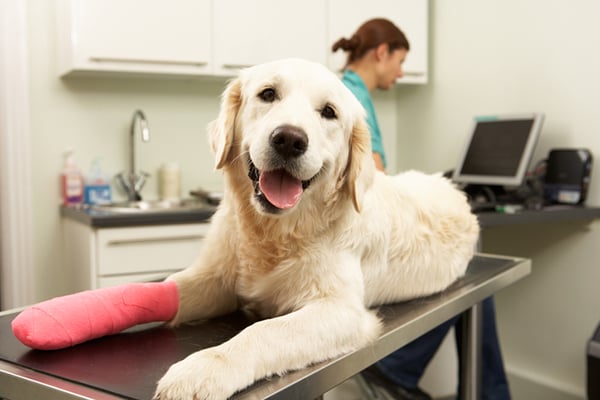Scheduled vs. Free Feeding: What’s Best for Your Dog?
Feeding your dog might seem like a simple task—scoop, pour, repeat.
But beneath that daily routine lies a surprisingly debated topic among pet owners and professionals alike: Should you feed your dog on a schedule, or let them eat freely throughout the day?
Like many decisions in pet parenting, the answer isn’t always black and white. Scheduled feeding and free feeding each come with their own set of pros, cons, and passionate supporters.
Some dog owners swear by the structure and predictability of meal times, while others prefer the convenience and flexibility of keeping the bowl full at all hours.
And then there’s the hybrid approach, which tries to blend the best of both worlds.
But here’s the thing—what works for one dog might be a disaster for another. A hyperactive Labrador with zero self-control may not thrive the same way a dainty and slow-eating Shih Tzu does when kibble is always available.
Factors like your dog’s breed, age, health, behavior, and even your own daily schedule can play a big role in determining which method leads to a healthier, happier pup.
In this article, we’ll break down the key differences between scheduled and free feeding, explore the benefits and drawbacks of each, and help you determine which feeding style is the best fit for your dog.
Whether you’re a new dog owner unsure where to start, or a seasoned pup parent considering a change, this guide will give you the insight you need to make a well-informed decision—and maybe even improve your dog’s health and behavior in the process.
1. What Is Scheduled Feeding?
Scheduled feeding means your dog eats at designated times each day—typically once or twice, depending on their age and health.
You place a set amount of food down and remove the bowl after about 15–20 minutes, whether they’ve finished eating or not.
This method gives you full control over portions and helps create a predictable routine. It’s particularly useful for training, housebreaking, and spotting changes in appetite that might signal illness.
For growing puppies or dogs with medical needs, scheduled meals offer structure that keeps their energy and health in check.
2. What Is Free Feeding?
Free feeding allows your dog to graze throughout the day. You simply fill the bowl and top it off when it gets low—food is always available, and your dog eats when they feel hungry.
This method is easy for pet parents with busy schedules, but it assumes your dog has solid self-control.
While it can work for some dogs, especially slow eaters or those with little food drive, it opens the door to weight gain and makes it harder to track how much they’re really eating.
3. Pros of Scheduled Feeding
Scheduled feeding promotes healthier eating habits. You can measure exact portions and avoid overfeeding, which is critical for managing weight.
It also builds routine—your dog knows when food is coming, which reduces anxiety and helps regulate bathroom breaks.
Scheduled meals are especially helpful for training because food becomes a clear reward. Plus, you’ll notice quickly if your dog isn’t eating, which might indicate illness.
4. Cons of Scheduled Feeding
Sticking to a feeding schedule takes effort. You’ll need to be consistent, even when life gets busy, or risk throwing off your dog’s routine.
Dogs that are picky or naturally graze may not eat well under pressure. Some may become anxious or food-obsessed as they anticipate meals, especially if they’re fed too infrequently. It’s a commitment that requires time, planning, and flexibility.
5. Pros of Free Feeding
Free feeding gives dogs the freedom to eat when they’re truly hungry. It’s especially helpful for small or underweight dogs that nibble rather than feast.
For owners with unpredictable schedules, it’s convenient—no rushing home to serve dinner.
It also removes the urgency around meals, which can reduce food aggression or anxiety in some pups. When it works, it can be a low-stress option for everyone involved.
6. Cons of Free Feeding
Unfortunately, many dogs don’t self-regulate well. Free feeding can quickly lead to weight gain, especially for food-motivated breeds like Labradors or Beagles.
It’s also harder to track appetite. If your dog skips a meal, you might not notice right away. In multi-dog homes, one pup may hog the food, while another doesn’t get enough.
And forget house training—it’s harder to predict potty times when food is always available.
7. Breed and Personality Considerations
Not all dogs are built the same. Greedy eaters with big appetites often need scheduled meals to prevent overeating and bloat.
Breeds like Greyhounds or Basenjis, who tend to be pickier and slower eaters, may do just fine with free feeding.
Similarly, nervous or shy dogs might eat more comfortably without a time limit. Tailoring your method to your dog’s personality is key to long-term success.
8. Age and Health Considerations
Puppies thrive on scheduled feedings. They need frequent, small meals to support their rapid growth and energy levels—and structure to aid potty training.
Senior dogs or those with health issues (like diabetes) also benefit from meal schedules that align with medications.
On the flip side, free feeding might suit healthy adult dogs with mild appetites. But when health is on the line, precision is almost always better than convenience.
9. Impact on Weight Management
One of the strongest arguments for scheduled feeding is its impact on weight control. You know exactly how many calories your dog is getting.
With free feeding, even a little extra per day can lead to obesity over time. And once the pounds pile on, they’re hard to shed.
Obesity contributes to joint problems, diabetes, and shorter lifespans. A measured, consistent approach gives you the upper hand in keeping your dog fit and healthy.
10. Feeding in Multi-Dog Households
Multiple dogs sharing a space can make feeding complicated. Free feeding may lead to guarding behaviors or competition over the bowl.
Scheduled feeding allows each dog to eat separately in peace. You can monitor who’s eating what, ensure no one is left out, and make feeding a stress-free routine.
It’s especially important if your dogs have different dietary needs or medication schedules.
11. Veterinarian Recommendations
Most vets recommend scheduled feeding for its health and behavioral benefits. It’s easier to track intake, control weight, and detect early signs of illness.
Veterinarians often see the downsides of free feeding firsthand—obesity, dental issues, and food-related anxiety in multi-pet homes.
Unless your dog has a specific medical need for all-day access to food, chances are your vet will steer you toward structured meals.
12. Combining Both Methods (Hybrid Approach)
Some owners find success with a middle ground. You can schedule two main meals but leave a small amount of kibble out during the day.
Timed feeders are another option—they dispense food at set times without requiring your physical presence.
These hybrid strategies offer flexibility without giving up control, and can work well for dogs that don’t fit neatly into one method or the other.
13. Transitioning From One Method to Another
Switching feeding styles should be gradual. If moving from free feeding to scheduled meals, begin by introducing set meal times and measuring portions.
Give your dog 15–20 minutes to eat, then remove the bowl. Over a few days, most dogs adapt. If going the other way, increase food access slowly and watch for overeating. Keep an eye on weight and behavior, and consult your vet if needed.
14. Final Verdict: Which One Is Better?
There’s no one-size-fits-all answer. Scheduled feeding offers structure, health benefits, and is vet-approved for a reason—it gives you more control.
Free feeding can work for certain dogs and owners, especially when schedules are unpredictable or your pup is a light eater.
Ultimately, the best method is the one that suits your dog’s lifestyle, health needs, and your own routine. Whichever you choose, consistency is key.




















